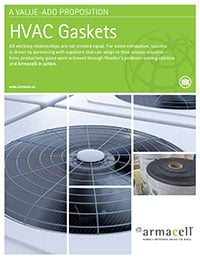-2.png?width=512&name=unnamed%20(1)-2.png)
In the medical world, clean and sterile equipment is very important. As businesses that operate in this industry, we often have to produce parts that users can sterilize. How do you know what sterilization process is correct? And what materials can even be sterilized?
That’s what Mueller’s health and safety experts are going to address in this guide. We’ll break down the different sterilization processes, what materials can withstand it, and the products that need those sterile materials. With this information, you’ll be able to create units suited for any medical setting.
What is the Sterilization Process?
There are multiple material sterilization processes for medical applications, just like there are different ways to sterilize the medical equipment they make up; some of them are the same. Those processes include:
- Heat sterilization
- Steam sterilization
- Chemical sterilization
Heat and steam sterilization are fairly self-explanatory. However, there are a few different chemicals that can sterilize products, including ethylene oxide, ozone, and bleach. Your customer will specify what type of sterilization is best for the material they need.
-2.png?width=512&name=unnamed%20(2)-2.png)
What Materials Can Withstand Sterilization?
There are three main materials suited for sterilization:
- Silicones
- Urethanes
- Polytetrafluoroethylene (PTFE) products
All of these material types can withstand high temperatures and have strong chemical resistance. They also each have important applications in the medical industry.
IV bags are often made of urethane films, while the tubes attached to those bags are usually made of silicone. Syringes are also made of PTFE plastics due to their sturdy nature.
Mueller works with medical device providers, and many of our materials are used in sterilization products. Those products include an adhesive film that attaches to thermometers and changes color if it reaches a certain temperature. The film also keeps the thermometer from getting mixed up with other tools and jeopardizing its sterilization.
What Products Need to be Sterilized?
If a material is going to be used within a surgical center, it needs to be sterilized. These environments have no tolerance for unsterilized equipment. However, in places like dentist offices, the seats, lights, and other units aren’t sterilized after every appointment since they do not come into contact with patients in harmful ways. These products are cleaned after use, but they aren’t fully sterilized.
In simplest terms, any material that is used in surgical centers needs to be sterilized. Whether it’s an IV tube or a tooth-cleaning drill, these products should always be free of any contamination when they are used. The same should go for the materials you use in them.
It’s important to remember that the medical industry is very broad, which means not everything is specialized or focused. There are some routine applications that don’t require sterilization, such as the previously mentioned dental chairs.

Why Does Material Sterilization Matter in the Health & Safety Industry?
The health and safety industry is massive, and not all applications have to be sterilized. However, it is important to know when materials do need to be sterilized and what that process looks like.
If you handle or convert materials used in medical devices that come into contact with the body or skin, you need to know everything about material sterilization and skin irritation. Understanding the different processes and materials they are compatible with will help you create products suitable for any medical setting, whether it’s the operating room or the dentist’s office.






